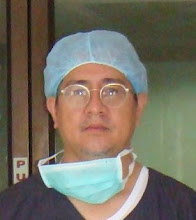
(Our patient presented with torticollis)
Atlantoaxial instability (AAI), which denotes increased mobility of C2 in relation to C1, occurs more frequently in persons with Down syndrome (DS) than in the general population. The association was first reported in 1961 almost 100 years after DS was described. AAI, which affects 10–20% of individuals with DS, is mostly asymptomatic and is diagnosed using radiography
The instability is recognized through lateral neck radiographs by the presence of an abnormally large anterior atlanto-odontoid distance (AAOD) The upper limit of a normal AAOD is 4 mm in subjects who are younger than 15 years and 3 mm in older subjects The anterior space between the atlas and the axis normally opens in flexion and closes in extension, which is why the AAOD is greater when the neck is radiographed in flexion than it is in neutral or extension positions The danger of AAI is that it becomes symptomatic in 1– 2% of individuals with DS when the displaced odontoid impinges the spinal cord .
Manifestations include
- neck discomfort,
- abnormal gait,
- change in sphincteric control,
- upper motor neuron lesion (UMNL),
- paralysis, and even death.
Patients with symptomatic AAI need urgent evaluation and management, which may include posterior fusion of C1 to C2. Patients with the asymptomatic condition need to take precautions to avoid neck injury as well as regular followups to detect any neurological deterioration.
The occurrence of degenerative changes in the cervical spine of patients with DS was first reported in 1966 As expected, these changes increase with age but they occur earlier than in the normal population Although cervical spondylosis has the potential to cause cervical cord damage, it has received less attention in the literature than AAI. This is mainly because most of the studies about cervical spine abnormalities were based on paediatric populations.
Abnormalities of the odontoid peg, such as
- odontoid hypoplasia and
- the presence of accessory ossicles
- Os odontoideum may contribute to AAI.
AAI had degenerative changes in the cervical spine may implicate ligamentous laxity as a common mechanism. Lax ligaments allow more than normal motion between vertebral bodies and may lead to early disc lesions. Identification of cervical spondylosis in DS patients with AAI is important. More interesting than a common aetiology between the two conditions is the potential functional interaction. The restriction of motion lower in the cervical spine, brought on by degenerative changes, places stress on the extremely mobile atlantoaxial joint and may increase the instability. If the prevalence of AAI decreases with advancing age, more attention should be paid to cervical spondylosis, which increases with age, in adults with DS.
The American Academy of Pediatrics has recommended that all children with Down syndrome get screening neck x-rays between the ages of 3 and 5 years, but this recommendation has not been universally embraced. It does seem prudent to obtain x-rays in affected children prior to general anesthesia (where the neck is bent backward prior to intubation), or if the child is considering participation in contact sports.
Other spine problems with Down syndrome:
Scoliosis
Issues in management of Down Syndrome
- Mental retarded hence the ability to follow instructions and the frequency of self-inflicted trauma
- Getting a proper implant sizes(small vertebrae) hence the need to use jacket such as minerva jacket
- The presence of other congenital anomalies such as VSD/ASD or congenital spines which complicates the management or other skeletal problems such as hip dislocation
Cervical spine abnormalities associated with Down syndrome
Fawzi Elhami Ali et alInternational Orthopaedics (SICOT) (2006) 30: 284–289
DOI 10.1007/s00264-005-0070-y


0 comments:
Post a Comment